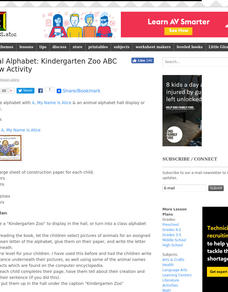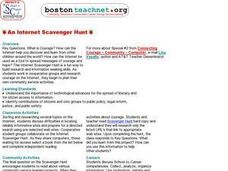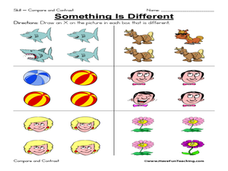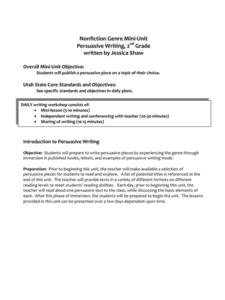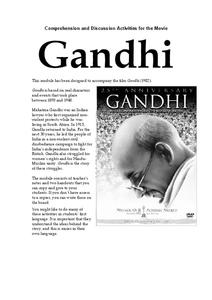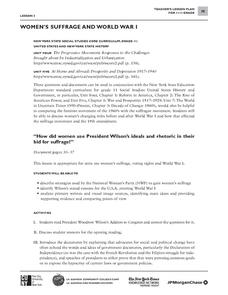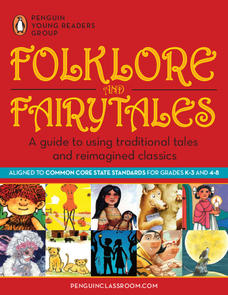Curated OER
Animal Alphabet: Kindergarten Zoo
Students explore the letter sounds and read the book, "A, My Name is Alice." They create a page for a class alphabet book or zoo animal display.
Curated OER
An Internet Scavenger Hunt
Young scholars use the internet to gather information about children around the world. In groups, they complete an internet scavenger hunt to research courage. They develop their own community service activity.
Curated OER
Something is Different: Same/Different
In this different/same worksheet, student draw an X on the picture in a box that is different from the others, 6 sets total. A reference web site is given for additional activities.
Curated OER
Mythopoly: Where in the World Is Odysseus?
Learners study Greek mythology. Among other activities, they evaluate a work of art and discuss the influence, significance, and history as it pertains to mythology. As a culminating activity they create a board game that shows their...
Curated OER
Coins
Second graders observe and demonstrate how to count the value of assorted coins. They discuss a story from their Math Storybook, and as a class solve a variety of problems using activity sheets. Students then independently complete a...
Curated OER
THE 1800s EXPERIENCE
Students explore aspects of life in the 1800's. In this lesson plan on historical life, students move through various outdoor stations and meet with costumed re-enactors (parent volunteers) who lead students in 8 different activities...
Curated OER
NATO and Russia: Will the Expansion of NATO Cause a New Cold War?
Eleventh graders role play as participants in a NATO meeting focused on inviting a number of independent republics from the former Soviet Union to become members of NATO. They represent their countries after researching them.
Perkins School for the Blind
Stuff, Seal and Stamp Mail
Have your class practice functional skills that can be applied to a wide variety of job opportunities. They will use a folding jig to help them fold, stuff, seal, stamp, and mail letters. Students with visual impairments will build...
Curated OER
Nonfiction Genre Mini-Unit: Persuasive Writing
Should primary graders have their own computers? Should animals be kept in captivity? Young writers learn how to develop and support a claim in this short unit on persuasive writing.
Perkins School for the Blind
Mail Delivery
Teaching job skills to your learners with special needs before they enter the workforce is a great way to ensure that they will gain employment. For this instructional activity, your students will become the school's very own mail or...
City University of New York
Women's Suffrage and World War I
Democracy cannot exist where not everyone has equal rights. Discuss the state of democracy and women's suffrage during World War I with class discussions, debates, and primary source analysis, in order for class members to connect...
Positively Autism
Sight Word Train
Keep students with autism on track learning sight words with the Sight Word Train. Complete directions, and a video demonstration are all part of this clever resource.
Reed Novel Studies
Fever 1793: Novel Study
There is no escaping fever in 1793. Mattie, a main character, soon learns that a disease outbreak has taken over much more than her hometown. Scholars discover how Mattie responds to her circumstances by learning new vocabulary and...
Curriculum Project
Gandhi
Introduce class members to Gandhi's non-violent, non-cooperative ideas with Richard Attenborough's 1982 bio-epic. The film traces the experiences that gave shape to Gandhi's ideas and the actions that eventually lead to the end of...
California Polytechnic State University
Australian Geography Unit
At the heart of this resource is a beautifully detailed PowerPoint presentation (provided in PDF form) on the overall physical geography of Australia, basic facts about the country, Aboriginal history, and Australia culture and lifestyle.
EngageNY
Modeling an Invasive Species Population
Context makes everything better! Groups use real data to create models and make predictions. Classmates compare an exponential model to a linear model, then consider the real-life implications.
Scholastic
Defining Conflict Using "The Interlopers"
Feeling conflicted? Work out those issues with a language arts lesson on internal and external conflict. Using "The Interlopers" by Saki, class members identify the conflicts between the characters before writing their own short...
Florida Center for Reading Research
Rhyme or No Rhyme
Scholars listen to a rhyming song, clap when they hear a rhyme, and shake their heads when they don't. They then draw a pair of objects that rhyme.
City University of New York
Woman's Suffrage and World War I
How did women use President Wilson's ideals and rhetoric in their bid for suffrage? To answer this essential question, class groups analyze primary written documents and visual images.
PHET
Planet Designer: Kelvin Climb
It's time to get those creative juices flowing! This second lesson plan in a series of five continues allowing pupils to design their own planets. It the same format as the first, but, this time, allows students to alter greenhouse...
Penguin Books
Folklore and Fairytales: A Guide to Using Traditional Tales and Reimagined Classics
Every culture has its own stories to tell. An interesting educator's guide shares a large collection of fairytales and folktales, some from different cultures and some re-creations of classics. A summary and brief teaching ideas...
Stanford University
Explosion of the Maine
An intriguing lesson features newspaper articles to help academics understand the political impact of the sinking the Maine and how the American media depicted the event. Scholars also view a presentation, participate in group...
Wild BC
Is Climate Change Good for Us?
Is it really that big of a deal if the global climate undergoes a little change? Young environmentalists consider this very question as they discuss in small groups the impact of different climate change scenarios on their lives,...
Curated OER
The Adventures of Tom Sawyer: Problematic Situation
Present your pupils with some moral dilemmas to examine. The scenarios, which learners rank by seriousness individually and then in groups, require learners to think about right and wrong.


